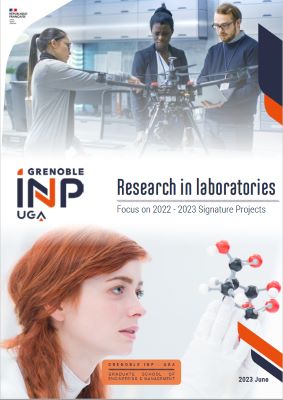Exploitation returns are revenues received by the owner(s) of an intellectual property (IP) title or know-how in return for its exploitation or assignment.
According to the IP Code, the owner is the employer of the inventors/authors of the results that generated the IP rights. However, ownership may be defined differently in special agreements between parties who contribute intellectually or financially to the IP generation. For example, a research contract may provide that the parties to the collaboration own the IP whether or not the different parties'employees contribute to the IP. For example, the Grenoble Alpes site agreement states that the IP owners are the supervisors of the laboratory from which the results leading to an IP right originate, regardless of the employing institution of the inventors/authors of that IP.
The IP exploitation can be direct and/or indirect. Direct exploitation means the owner (or one of the owners) exploits the IP themselves. Indirect exploitation means that the IP is exploited by a non-owner third party via an exploitation licence. As public research institutions and organisations do not exploit directly, the exploitation returns they receive are a counterpart of an indirect exploitation or a counterpart of the IP transfer .
Exploitation returns are negotiated in the form of royalties and/or lump sums. Royalties are a percentage of the turnover generated by the licensee's exploitation of the IP. Lump sums can be annual or at set intervals depending on the development plan. In the event of the sale of the IP, the exploitation return is, in most cases, a lump sum in full discharge (called "cash in discharge").
Civil servants and public employees who are inventors or authors of exploited IP (for example, a teacher-researcher at Grenoble INP) receive a profit-sharing bonus on the returns received each year by the institution(s) or organisation(s) that co-owns the exploited IP. The bonus is calculated on the basis of the amount before tax, after deduction of all direct costs incurred by the owner(s). This amount is referred to as net operating returns. The direct costs are the invoices of the IP firms or the filing fees with the Agency for the Protection of Programs (APP) in the case of software. The law sets the amount paid to the inventors/authors of the exploited IP at 50%, distributed according to the respective inventive shares. The law also sets a ceiling to this remuneration: the amount relating to the gross annual pensionable salary corresponding to the 2nd chevron of the group outside scale D. Above this amount, the inventors/authors receive 25% (and no longer 50%) of the net returns from exploitation.
While the IP exploited is a patent, inventors receive a patent bonus in addition. The bonus is a lump sum (€3,000 gross), shared between the inventors in proportion to their respective inventive shares. A first 20% instalment of the lump sum (€600) is paid after a one-year period from the filing of the first patent application. The second 80% tranche (€ 2,400) is paid upon signature of an exploitation licence or a contract of assignment of the patent to a third-party exploiter.
The payment of the exploitation returns (profit-sharing bonus and patent bonus) is subject to employer and employee charges.
Written by Isabelle Chéry and Gaëlle Calvary




